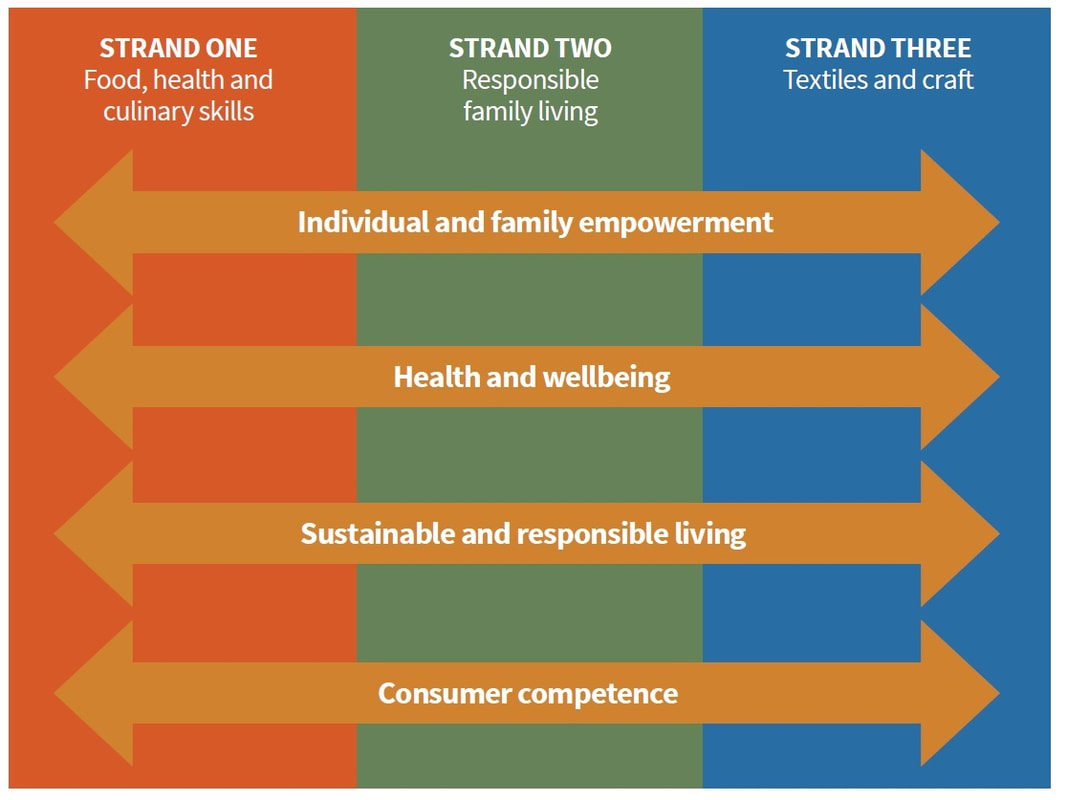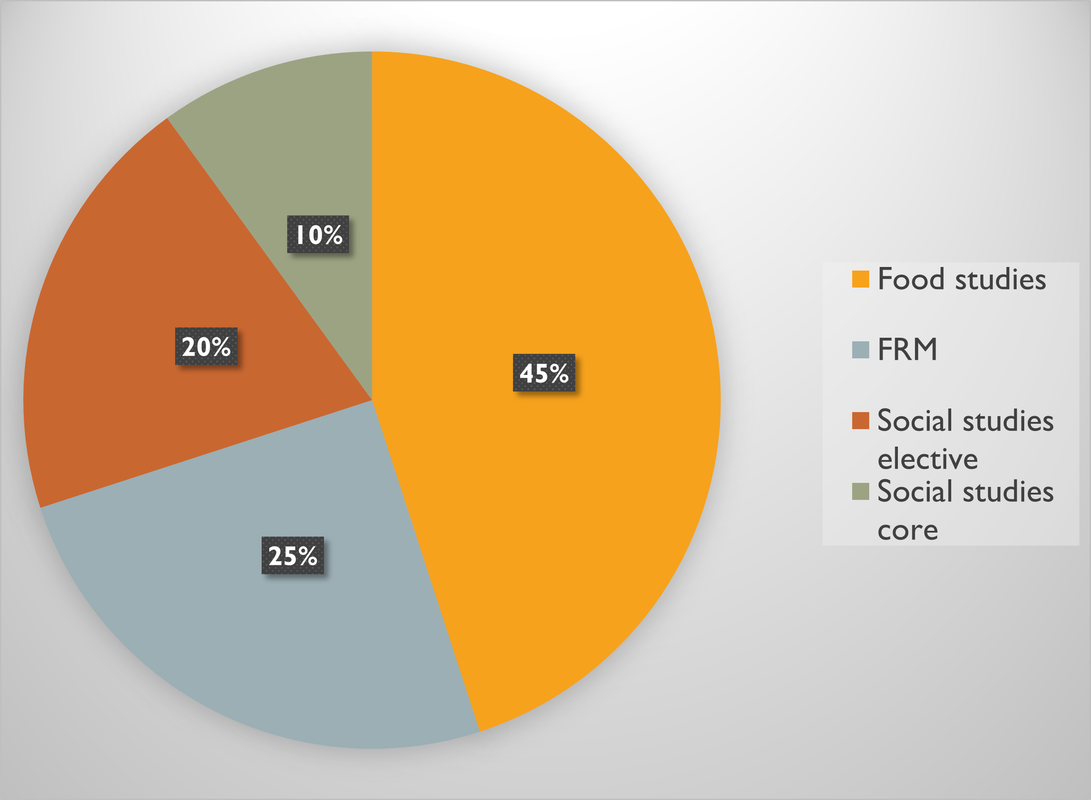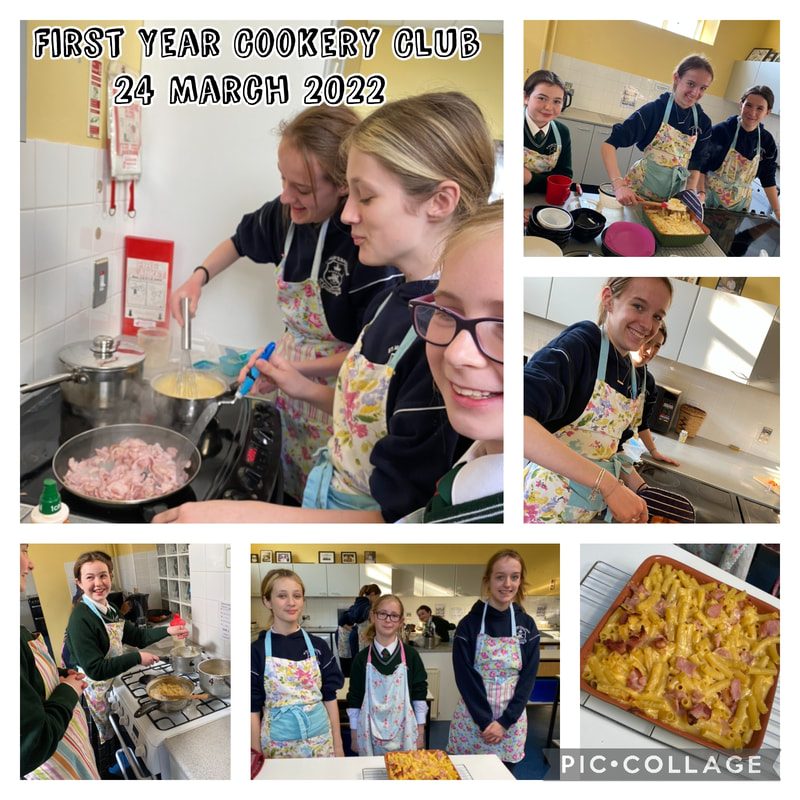St. Mary's Home Economics Department
WEB PAGE UNDER CONSTRUCTION
WEB PAGE UNDER CONSTRUCTION
The Home Economics course provides students with knowledge, understanding, skills and attitudes necessary for managing their own lives, for further, higher education and work. The learning experiences in Home Economics develop flexibility and adaptability in students, prepare them for a consumer-oriented society and provide a learning foundation for a wide range of careers in food, textiles, science, design, social studies and tourism.
How is Home Economics useful in real life?
Home Economics gives insight into:
Home Economics gives insight into:
- How to plan and cook nutritious and economical meals.
- Choosing nutritional food for themselves and their family
- The importance of good nutrition and health.
- The role of the consumer in modern eating patterns.
- Home Economics delivers vital skills that enable students to lead effective lives as individuals and family members as well as members of the wider community.
|
What careers can Home Economics lead to?
|
|
|
Sample of Junior Cycle topics
The specification for Junior Cycle Home Economics focuses on developing students’ understanding and skills to achieve an optimal, healthy and sustainable life through three inter-connected contextual strands:
|
Classroom Based Assessments (CBAs)
The CBAs are completed during class time. CBAs allow students will actively engage in practical and authentic learning experiences.
Overview of descriptors
There are four level descriptors of achievement in each Classroom-Based Assessment:
The CBAs are completed during class time. CBAs allow students will actively engage in practical and authentic learning experiences.
Overview of descriptors
There are four level descriptors of achievement in each Classroom-Based Assessment:
- Exceptional describes a piece of work that is of an extremely high standard.
- Above expectations grade describes a piece of work that reflects a particularly good piece of work but with feedback from the teacher the student has potential to improve.
- In line with expectations grade describes a piece of work that reflects most of the Features of Quality for the Classroom-Based Assessment well. It shows a good understanding of the task in hand and is free from significant error.
- Yet to meet expectations grade describes a piece of work that falls someway short of the demands of the classroom-Based Assessment and its associated Features of Quality. The student has made a good attempt, but the task has not been grasped clearly. This grade also enables a student to progress to the 3rd year project.
- A ‘Not reported’ is granted if a student does not make any attempt at producing any work for their CBA
Junior Cycle Exam/Requirements /breakdown of marks
Final Assessment Year 3 – (Issued and marked by the State Examinations Commission)
How it is marked:
When are they done
Final Assessment Year 3 – (Issued and marked by the State Examinations Commission)
How it is marked:
- Written exam is marked by the SEC – Subject specific examiners.
- Practical exam is examined by Home Economics examiners.
- The two classroom-based assessments (CBAs) are marked in a departmental SLAR meeting
When are they done
- CBA 1- completed in second year (January).
- CBA 2 – completed in third year (January).
- Practical exam- completed in April/May of third year.
- Written exam- completed in June.
Transition Year
This transition module aims to:
This transition module aims to:
- Develop students’ practical culinary skills.
- Develop student’s knowledge and appreciation of the cultural diversity that is a part of Ireland today, and how our table has been enriched by different foods that have come to us from different cultures.
- Encourage students to make healthy food choices based on an understanding of the value of different foods and an awareness of the importance of a healthy diet.
- Investigate the meaning/understanding of 'healthy eating' for low-income households.
- Understand the principles of sensory analysis for the purposes of evaluating consumer products.
- Encourage students to become independent learners, through research tasks, mini projects, and self-assessment.
- Complete the planning and preparation sheets, including table set up, division of work.
- Practical Culinary skills & evaluation.
- Presentation of dishes
- Quizzes
- Term exams
|
Sample of Leaving Certificate topics
|
Why pick Home Economics?
Students should study this subject to:
Students should study this subject to:
- Be able to research, study, analyse and interpret material.
- Be able and willing to learn Nutrition and Culinary skills.
- Be able to communicate well.
- Be organised.
- Be able to discuss topics and work in teams.
Senior Cycle Exam breakdown
- 20% Food Studies Practical - Coursework Journal (marked by external examiner)
- 80% written exam in June (also marked by external examiner)
Links
E-books
Existing social media
We currently do not have a Home Economics social media presence but see the main school page.
Curricula
Subject Specific Websites
E-books
Existing social media
We currently do not have a Home Economics social media presence but see the main school page.
- Twitter: @stmarysbaldoyle
- Instagram: @stmarysbaldoyle
Curricula
Subject Specific Websites






